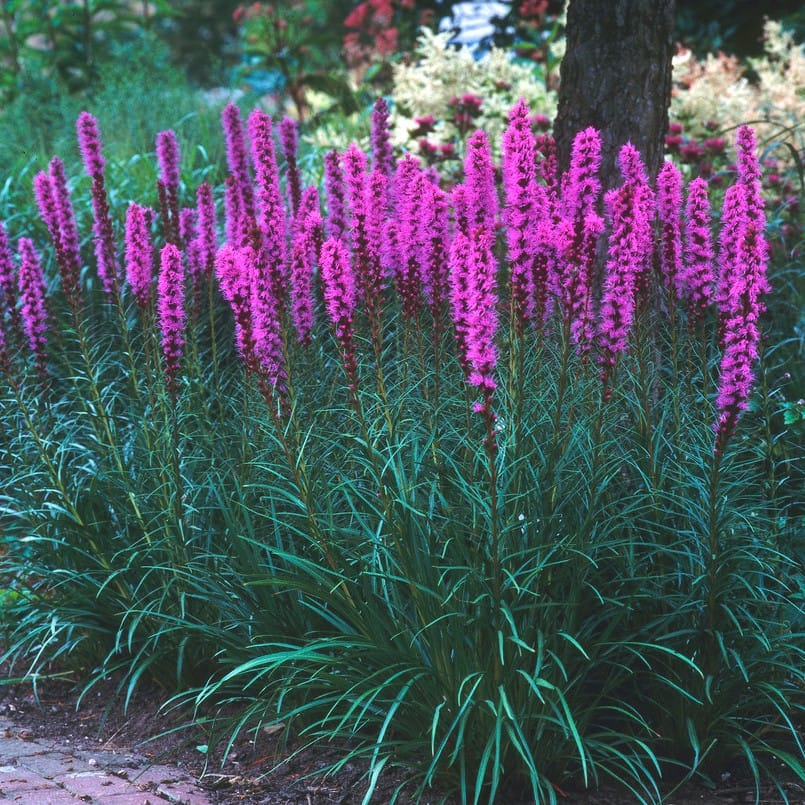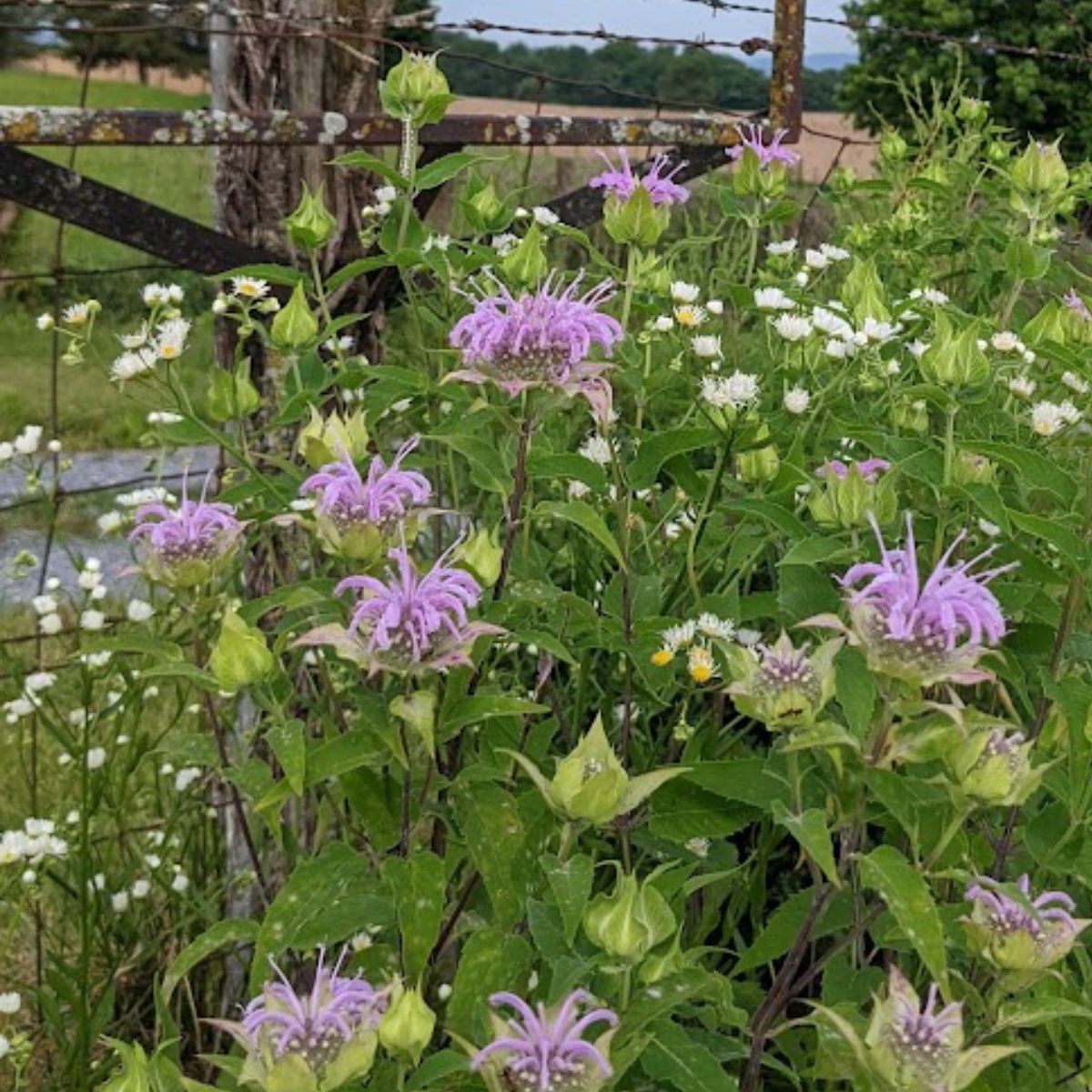Wild Bergamot Companion Plants That Will Attract Pollinators And Add Color To Your Garden
Wild bergamot (Monarda fistulosa) is a beautiful and versatile plant that can add color and interest to any garden. It is also a magnet for pollinators, such as bees, butterflies, and hummingbirds. If you are looking for companion plants for wild bergamot, there are many options to choose from. Here are a few of the best:
- Black-eyed Susans. These cheerful yellow flowers bloom at the same time as wild bergamot and attract the same pollinators. They also have similar growing requirements, so they will thrive in the same conditions.
- Coneflowers. Coneflowers come in a variety of colors, including purple, pink, and white. They are all tall and showy flowers that will add height and drama to your garden. Coneflowers also attract a wide variety of pollinators.
- Echinacea. Echinacea is another popular pollinator plant that comes in a variety of colors. It is known for its medicinal properties, and it is often used to treat colds and flu. Echinacea is also a relatively low-maintenance plant, making it a good choice for busy gardeners.
- Liatris. Liatris is a spiky, lavender flower that blooms in the summer. It is a great choice for attracting butterflies and hummingbirds. Liatris is also relatively drought-tolerant, making it a good choice for gardens in hot, dry climates.

- Salvia. Salvia comes in a variety of colors, including blue, purple, and pink. It is a long-blooming plant that will add color to your garden from summer to fall. Salvia is also a good choice for attracting hummingbirds.
In addition to these popular companion plants, there are many other options to choose from. When selecting companion plants for wild bergamot, it is important to consider the plant's height, bloom time, and water needs. You also want to make sure that the plants you choose will complement each other's colors and textures.
With a little planning, you can create a beautiful and pollinator-friendly garden with wild bergamot and its companion plants. Your garden will be abuzz with activity all summer long!
Wild bergamot is a beautiful and fragrant perennial that is native to North America. It is a member of the mint family and is known for its attractive lavender flowers and minty leaves. Wild bergamot is also a popular pollinator plant, attracting a variety of butterflies, bees, and hummingbirds.
If you are considering planting wild bergamot in your garden, you may be wondering what companion plants would be best. Here are a few suggestions:
- Black-eyed Susans: These cheerful yellow flowers bloom at the same time as wild bergamot and will help to add contrast to your garden.
- Coneflowers: Coneflowers come in a variety of colors, including purple, pink, and white. They are all tall and stately plants that will complement the shorter wild bergamot.
- Liatris: Liatris is a spiky blue flower that blooms in late summer. It is a great choice for adding height and interest to your garden.
- Anise hyssop: Anise hyssop is another member of the mint family. It has attractive blue flowers and a licorice-like scent.
- Bee balm: Bee balm is a close cousin of wild bergamot. It has similar lavender flowers and is also a great pollinator plant.
For more information about wild bergamot companion plants, please visit Gardenia Inspiration.
FAQ of wild bergamot companion plants
- What are the best companion plants for wild bergamot?
Wild bergamot is a member of the mint family, so it does well when planted with other mints, such as spearmint or peppermint. Other good companion plants for wild bergamot include:
* Black-eyed Susans
* Echinacea
* Lilac
* Garden phlox
* Coral bells
* Buddleia
* Penstemon
These plants have similar growing requirements and can help to attract pollinators to your garden.
- What are the benefits of planting companion plants with wild bergamot?
There are many benefits to planting companion plants with wild bergamot. Some of these benefits include:
* Increased pollination: Companion plants can help to attract pollinators, such as bees and butterflies, to your garden. This is beneficial because pollinators help to pollinate plants, which is necessary for plant reproduction.
* Improved pest control: Some companion plants can help to deter pests from your garden. For example, marigolds are known to repel nematodes, which are a common pest of tomatoes.
* Enhanced soil health: Companion plants can help to improve the health of your soil by adding nutrients, aerating the soil, and suppressing weeds.
* Increased biodiversity: Planting companion plants can help to increase the biodiversity of your garden. This is beneficial because a diverse garden is more resilient to pests and diseases.
- How far apart should I plant wild bergamot and its companion plants?
The spacing requirements for wild bergamot and its companion plants will vary depending on the specific plants you are planting. However, as a general rule of thumb, you should space wild bergamot plants about 18-24 inches apart. Companion plants can be spaced closer together, depending on their size and growth habit.
- When should I plant wild bergamot and its companion plants?
Wild bergamot and its companion plants can be planted in the spring or fall. If you are planting in the spring, make sure to do so before the last frost. If you are planting in the fall, make sure to do so so that the plants have time to establish themselves before the ground freezes.
- How do I care for wild bergamot and its companion plants?
Wild bergamot and its companion plants are relatively easy to care for. They need full sun and well-drained soil. They should be watered regularly, especially during hot, dry weather. You may need to fertilize them once or twice a year.
Image of wild bergamot companion plants
- Bee balm: Bee balm is a native North American plant that is closely related to wild bergamot. It attracts the same pollinators as wild bergamot, and the two plants can be planted together to create a beautiful and beneficial pollinator garden.
- Coneflower: Coneflower is another native North American plant that attracts pollinators. It blooms in the summer and fall, and its bright colors add interest to the garden.
- Lavender: Lavender is a Mediterranean plant that is known for its calming scent. It also attracts pollinators, and its purple flowers add a touch of elegance to the garden.
- Salvia: Salvia is a genus of flowering plants that includes many species that attract pollinators. Some popular salvias for companion planting with wild bergamot include scarlet sage, pineapple sage, and blue salvia.

- Yarrow: Yarrow is a hardy perennial that blooms in the summer. It attracts pollinators and butterflies, and its daisy-like flowers add a touch of whimsy to the garden.



Post a Comment for " Wild Bergamot Companion Plants That Will Attract Pollinators And Add Color To Your Garden"